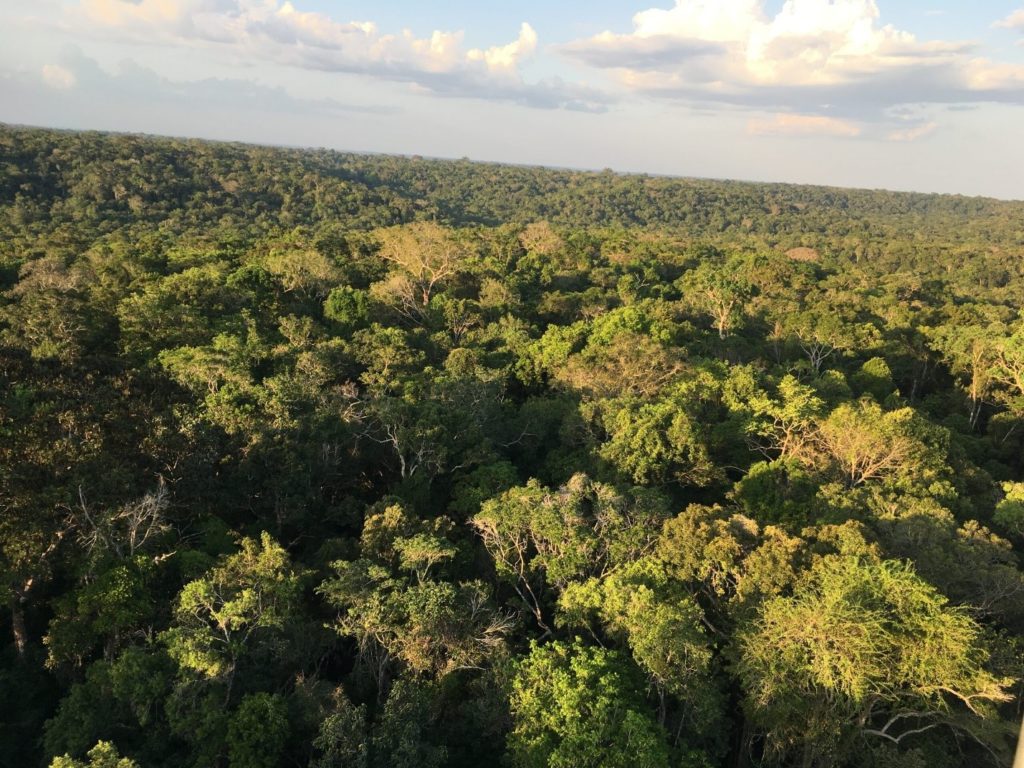Differential Amazon tree responses to dry conditions and a shift to deeper soil water uptake.
The Science
Tree water use and soil water extraction patterns were monitored during a month-long dry period in a Central Amazon upland tropical forest. During the 2018 dry period, tree water use increased, remained the same, or decreased, depending on species. Water use was dependent on tree size and the amount of conducting sapwood in the trunk. While most roots were in the upper soil layers, some roots exceeded 2 m depth. As the upper soil dried out, more water was taken up from deeper depths.
The Impact
While the upper 2 m of soil can provide much of the water needed during a dry period, deeper sources of water will be required during drought. Tree hydraulic strategies vary, and those that access and shift to deep water sources may be better able to survive drought. Knowing how different tree species respond to drought and how soil water availability changes with drought is important for modeling the responses of tropical forests to projected changes in precipitation patterns.
Summary
With current observations and future projections of more intense and frequent droughts in the tropics, understanding the impacts that extensive dry periods may have on tree and ecosystem-level water use and photosynthesis has become increasingly important. This research investigated soil and tree water extraction dynamics in an old-growth upland forest in central Amazonia during the 2018 dry season. Tree water use was measured by sap flow sensors installed in eight dominant canopy trees, each a different species with a range in diameter, height, and wood density. Soil moisture probes were installed near six of those trees and measured water content and soil water extraction within the upper 1 m. To link depth-specific water extraction to patterns to root distribution, fine root biomass was measured through the soil profile to 235 cm. To scale plot-level tree water use, tree diameters were measured for all trees within a 5 m radius around each soil moisture probe.
The sensitivity of tree water use to reduced rainfall varied by tree, with some increasing and some decreasing water use during the dry period. Tree-level water use ranged from 11-190 liters per day. Stand level water use based on multiple plots encompassing sap flow and adjacent trees varied from ~1.7 to 3.3 mm per day, increasing with tree density. Soil water extraction was dependent on root biomass, which was dense at the surface (i.e., 45% in the upper 5 cm) and declined dramatically with depth. As the dry season progressed and the upper soil dried, soil water extraction shifted to deeper levels, and model projections suggest that much of the water used during the month-long dry-down could be extracted from the upper 2-3 m. Results indicate variation in rates of soil water extraction across the research area and temporally through the soil profile. These results provide key information on tree water use and soil water extraction as water availability changes and can be used in models that project tropical forest response to drought.

Principal Investigator: Jeffrey Warren, Oak Ridge National Laboratory, warrenjm@ornl.gov
Program Manager: Daniel Stover, U.S. Department of Energy, Biological and Environmental Research (SC-33), Environmental System Science, daniel.stover@science.doe.gov
Funding
This material is based upon work supported as part of the Environmental System Science program’s Next Generation Ecosystem Experiments–Tropics (NGEE–Tropics), which is funded by the U.S. Department of Energy’s (DOE) Office of Science Biological and Environmental Research (BER) Program through contract No. DE-AC02-05CH11231 to LBNL). Additional funding for this research was provided by the Conselho Nacional de Desenvolvimento Científico e Tecnológico (CNPq).
References
Spanner, G.C., et al. “Dry Season Transpiration and Soil Water Dynamics in the Central Amazon.” Frontiers in Plant Science 13, 825097 (2022). DOI: 10.3389/fpls.2022.825097.